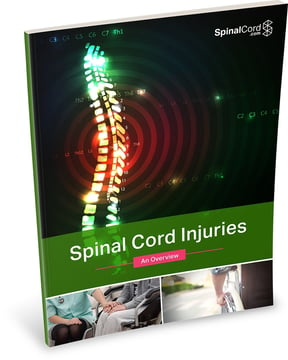MENU

- About
- Journal
- Spinal Cord Injury
- Brain Injury
- Treatment
- Legal Options
- Resources
- Local Resources
- Community
- Recognition


The conus medullaris is the bundled, tapered end of the spinal cord nerves. Situated near the first two lumbar vertebrae, the conus medullaris ends at the cauda equina, a bundle of spinal nerves and nerve roots. Consequently, problems with the conus medullaris often affect the cauda equina. Conus medullaris syndrome is a secondary form of spinal cord damage resulting from injuries to the lumbar vertebrae.

Conus medullaris syndrome is a type of incomplete spinal cord injury that is less likely to cause paralysis than many other types of spinal cord injuries. Instead, the most common symptoms include:
Conus medullaris syndrome isn't a disease in its own right, but rather the product of a spinal trauma. In most cases, a blow to the back—such as from a car accident or gunshot—is to blame. But some diseases, notably spinal cord infections, malformations of the spinal column due to spinal stenosis, and spinal tumors can also cause the syndrome.
Conus medullaris syndrome manifest symptoms that are similar to cauda equina syndrome, but the two conditions require different treatment. Conus medullaris typically produces sudden symptoms on both sides of the body, while cauda equina syndrome usually develops over time, producing uneven symptoms concentrated on one side of the body.
Some other criteria that can help you and your care team differentiate one from the other include:

To diagnose you with conus medullaris syndrome, your doctor may conduct MRI imaging of your lower back and spine. Treatment varies, and depends on the cause of the injury as well as its extent.
Spinal decompression surgery often helps, and if a physical impediment to function remains—such as a tumor or the remnants of a bullet—your doctor may remove these to restore spinal function. Radiation may help if your symptoms are due to cancer. And if an infection caused the symptoms, or your injury is so severe it led to an infection, you may need intravenous or oral antibiotics. You will likely also need physical therapy to regain function.
Additional resources for further reading on this subject:
SpinalCord.com is a service that provides free and accurate information to educate the public on brain and spinal cord injuries. SpinalCord.com is sponsored by Swope, Rodante P.A., a personal injury law firm with offices at 1234 East 5th Avenue, Tampa, FL 33605 and 160 Clairemont Avenue, Suite 200, Decatur, GA 30030. The firm’s attorneys are licensed to practice in Florida and Georgia. If Swope, Rodante P.A. undertakes representation of a client, the firm may do so with the assistance of co-counsel in the state where the case is filed.
Use of this site or viewing the information contained on the site does not create an attorney-client relationship. An attorney-client relationship can only be created by a mutual agreement in writing. All information submitted through SpinalCord.com is confidential and will not be shared with any other parties. However, submitting information or transmitting materials through the site does not create an attorney-client relationship. Communications with SpinalCord.com or its recovery coaches will also not create an attorney-client relationship.
Additionally, the information relayed on SpinalCord.com does not necessarily reflect the opinions of Swope, Rodante P.A. The information on this site should not be interpreted as legal or medical advice. The majority of the content on this website was not created by lawyers or medical professionals. The information contained on this site should never be taken as a substitute for legal advice from a licensed attorney or health advice from a licensed healthcare professional.
The materials on this website are meant to be general and may not be relevant to a viewer’s individual legal or medical needs. Visitors to this website should not act on any information on this site without first seeking an opinion from a licensed attorney or licensed healthcare provider.
Laws frequently change, so the accuracy of information cannot be guaranteed.
The medical information on this site is intended to be a free resource to provide general information to the public. The information is intended to supplement instruction from your healthcare provider. The content of this website is meant for informational purposes only and is not meant to replace professional medical advice, diagnosis, or treatment. Always seek the advice of your physician or other licensed healthcare provider with any questions you may have regarding medical conditions.
SpinalCord.com does not endorse any of the companies or the opinions listed on this website. These companies and links are designed to be resources for informational use only. Additional detail about the security of your information is available at our Privacy Policy section. By submitting this form you are asking for someone from Swope, Rodante P.A. to contact you regarding your injury.
At SpinalCord.com we are committed to the protection of your privacy and we want to be upfront about how your information is collected and processed. We understand that privacy is very important to your security. Our Privacy Policy will stay up to date as new procedures are implemented. All information collected from any visitors is regarded as private information and will be kept confidential.
Every visitor to this website is recognized by our web server and it records the users domain and what pages were visited during that visitors time on the website. This method will also tell what search engine or referring site the user used to reach our website. The information obtained is used solely to increase the value of this site.
This Privacy Policy applies to our website and our subscription service. This Privacy Policy governs our data collection, processing, and usage practices. By using the website or the subscription service, you consent to the data practices described in this Privacy Policy. If you do not agree with the data practices described in this Privacy Policy, you should not use this website or subscription service.

Spinal cord injuries are traumatic for patients and their families. They cause disruptive changes to every aspect of your life and there is a lot of new information to navigate and understand. Our experts have collected everything in one place to help you learn more about your injury, locate doctors and treatment centers, find financial support, and get assistance navigating your next move.
Sponsored by Tampa medical malpractice attorneys Swope, Rodante P.A. a Florida law firm located at 1234 E 5th Ave, Tampa, FL 33605.
The information provided by SpinalCord.com is not a substitute for professional medical advice, diagnosis, or treatment, see Disclaimer Policy.